1700s Royal Children Never Visited Home Families Again
An elegant retreat for Britain's imperial family unit for over iii centuries
An elegant retreat for Uk's royal family for over three centuries
Kensington Palace was once a small and suburban villa, known as Nottingham House. New monarchs William Three and Mary II chose this minor mansion in 1689 to be their country retreat. Over the years, Stuart and Georgian monarchs transformed the palace into a stylish home for Britain's young royal families.
Queen Caroline shaped the palace and gardens, and Queen Victoria spent her childhood here. She left to alive in Buckingham Palace in 1837. Kensington later became dwelling house for minor royals, including her daughter, the talented sculptor Princess Louise.
More recently, the palace has been dwelling to Diana, Princess of Wales, Princess Margaret and The Knuckles and Duchess of Sussex. It is likewise the London home of The Duke and Duchess of Cambridge and their children.

Transforming Nottingham House
In 1689, the King and Queen deputed Sir Christopher Wren to draw up plans, but the Queen herself, excited past the project, took charge of the project to transform this little firm into a palace.
Enthusiastic Mary made regular visits to cheque on progress and to hurry the work along. While a huge workforce was labouring with the building, a team of designers were already preparing decorative schemes for the new rooms.
Even so, Mary's urging on the workmen had disastrous consequences. In Nov 1689 part of a newly-built wall complanate. 1 man was killed and others badly injured. It happened minutes after the Queen had toured the site. A shaken Mary wrote to her hubby of the incident: 'It shewed me the hand of God apparently in it, and I was truly humbled'.
Despite the setback, the palace was soon finished, and the Rex and Queen moved in on Christmas Eve 1689.
Image: Queen Mary Two.

'Saturday nighttime terminal was a great entertynment made for the Prince of Baden at Kensington, where was dancing and gaming … and a keen supper and a banquet of sweetmeats … in that location could not be less than 1000 persons'
William lonely
When his beloved Mary died from smallpox in 1694, William lost his enthusiasm for these grand entertainments and instead held more sedate evenings and concerts.
Despite his grief, William finished the building with a k gallery range to the south of the palace, enlarging Sir Christopher Wren's original plan.
Did you know?
The gallery was originally hung with green velvet, and William would meet his spies and plan his war machine campaigns here.

Kensington nether Queen Anne
Anne (1702-14) flitted from palace to palace, in between bouts of ill health and 17 pregnancies. Sadly, none of her children lived to succeed her.
As reigning queen, Anne used the Rex'southward Apartments at Kensington, while her married man Prince George of Denmark used the Queen's Apartments.
The Queen spent fiddling time at Kensington, preferring Hampton Courtroom Palace, as she enjoyed hunting there in the all-encompassing palace grounds.
Reigning for such a short time the Queen was not a dandy builder, but she contributed much to the blueprint of the gardens.
Summer parties
Anne deputed architects Sir Christopher Wren and Nicholas Hawksmoor to design an orangery which became far more than a greenhouse.
Young 'upstart' architect John Vanbrugh added details of his own. Inside, Grinling Gibbons carvings and elegant pillars created an blusterous and delightful infinite.
The Queen loved her Orangery, finished in 1705, and used it to host summer parties at Kensington.
Did you know?
Anne besides used the Orangery for the traditional Easter anniversary of distributing money to her deserving subjects.
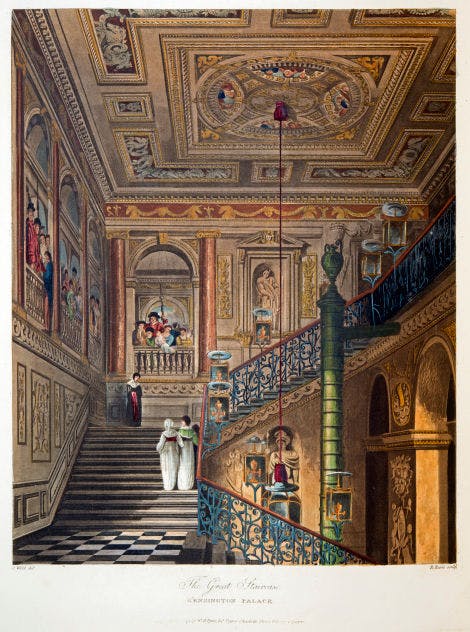
The King's Staircase
Kent's most lasting accomplishment at Kensington was his painted interiors. The spectacular Male monarch'south Staircase features life-size characters from George I's courtroom.
The next monarch, George 2 (1727-60) and his wife Queen Caroline I enjoyed hosting a far livelier court in these elaborately painted spaces.
They invigorated court life at Kensington, hosting lavish receptions and leading order life with sparkle. Clever Caroline held intellectual salons, where the brightest minds in arts and sciences gathered. She too helped shape the design of the palace gardens.
Epitome: The staircase was painted by William Kent and completed in 1724. The wrought fe balustrade is by French master blacksmith Jean Tijou.
The court in decline
Afterward Caroline'due south decease in 1737, courtroom life fell into a dull, predictable routine, with old courtiers described every bit 'flies in the autumn, sunning themselves at a window, past fifty-fifty buzzing' waiting for the hurricane of a new reign to sweep them all away.
When George II dropped expressionless of a middle set on in 1760, no reigning monarch then slept within the palace walls for nigh 70 years. His grandson, George Iii, disliked the palace and never stayed at that place.
Did you know?
Despite often criticising Caroline, boorish George II was heartbroken when she died. He swore never to marry over again.

A lonely babyhood?
The Duchess of Kent did her best to brainwash and protect the girl who might i twenty-four hours go queen.
Victoria was educated almost entirely inside the confines of the palace. Her daily program of lessons, known equally the 'Kensington System' was judged past some to be harsh.
Frequent trips to the theatre, daily rides in the gardens and her favourite dog Dash punctuated Victoria's early on days.
However, Victoria saw nearly no other children and was kept away from life at court.
Subsequently in her life, the Queen later recalled a childhood full of 'painful and disagreeable' scenes, just she also enjoyed life at Kensington.
Image: Victoria and her beloved spaniel Dash.
Victoria becomes queen
On the morning of 20 June 1837, Princess Victoria woke upward to exist told that the King had died and that she was at present queen.
She held her first Privy Council meeting that twenty-four hours in the Red Saloon and a few weeks afterward departed for Buckingham Palace, admitting she would miss 'poor old palace'.
Did you know?
Victoria was just eighteen years old when she became queen in 1837.
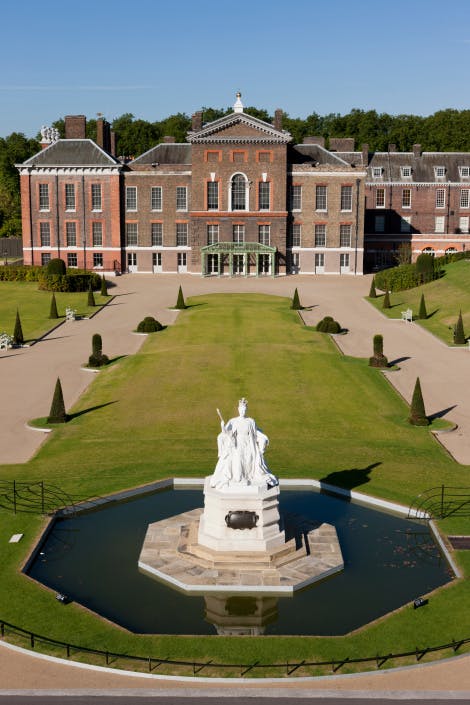
The 'Aunt Heap'
After Victoria left for Buckingham Palace, Kensington took on a new repose life every bit a royal 'dormitory'. It was home to several minor members of the royal family unit.
Also equally her eccentric uncle, the Duke of Sussex, Queen Victoria lodged ii of her daughters here - Princess Beatrice and Princess Louise, a talented sculptor.
Louise designed the iconic statue of Queen Victoria on the West Front and it was unveiled in 1893 to gloat Victoria's Gilded Jubilee.
In 1899, Victoria opened the State Apartments to the public. This blueprint of continued through the 1900s as parts of the palace remained open to the public while members of the royal family and loyal staff occupied the numerous private apartments.
As the purple inhabitants aged, the palace became known every bit the 'Aunt Heap'.
Mod royals
After the state of war, with the old Victorian princesses long departed, a new generation took center stage.
Princess Margaret and Lord Snowdon lived at Kensington with their immature family from the 1960s. The couple created fashionable interiors, in which they hosted many parties for glory guests, popular stars and artists.
The Prince and Princess of Wales lived at Kensington after their wedding in 1981. Their sons, Prince William and Prince Harry, grew up there.
Did yous know?
In 1940, The Luftwaffe dropped incendiary bombs on Kensington, badly damaging the State Apartments.

Victoria: Woman and Crown
Explore Queen Victoria's private life behind her advisedly-managed public epitome in this major new exhibition at Kensington Palace.
Closed 5 Jan 2020
Kensington Palace
Included in palace admission (members go free)
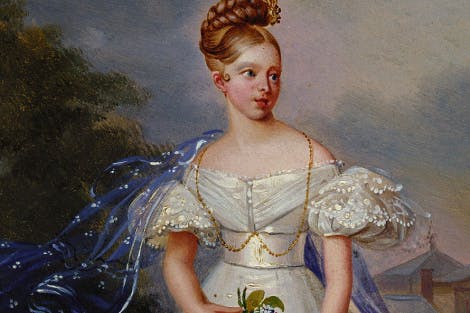
Victoria: A Royal Babyhood
Discover the story of Princess Victoria, the young girl destined to be queen, in the rooms where she was born and raised at Kensington Palace.
Open up
Kensington Palace
Included in palace admission (members get free)
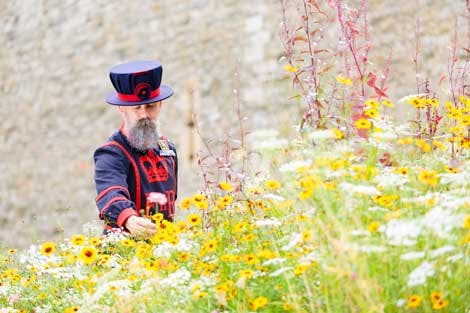
Superbloom at the Tower of London
See the Belfry of London's iconic moat become a spectacular, vibrant field of flowers in celebration of the Platinum Jubilee of Her Majesty the Queen.
01 June to 18 September 2022
Tower of London
Separate ticket
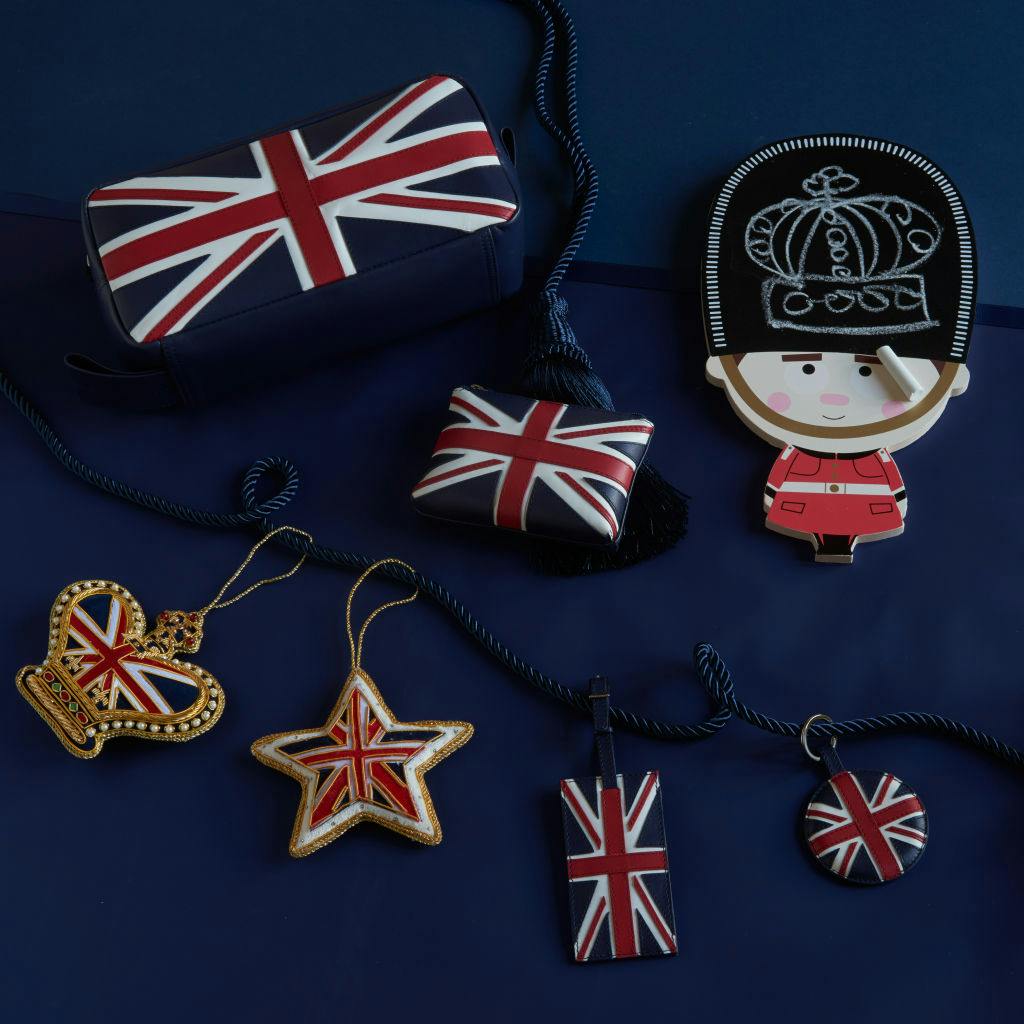
Shop Union Jack gifts
Brilliantly British our luxury Marriage Jack collection features patriotic stationary, wedlock jack homewares and luxury leather goods.
From £4.99
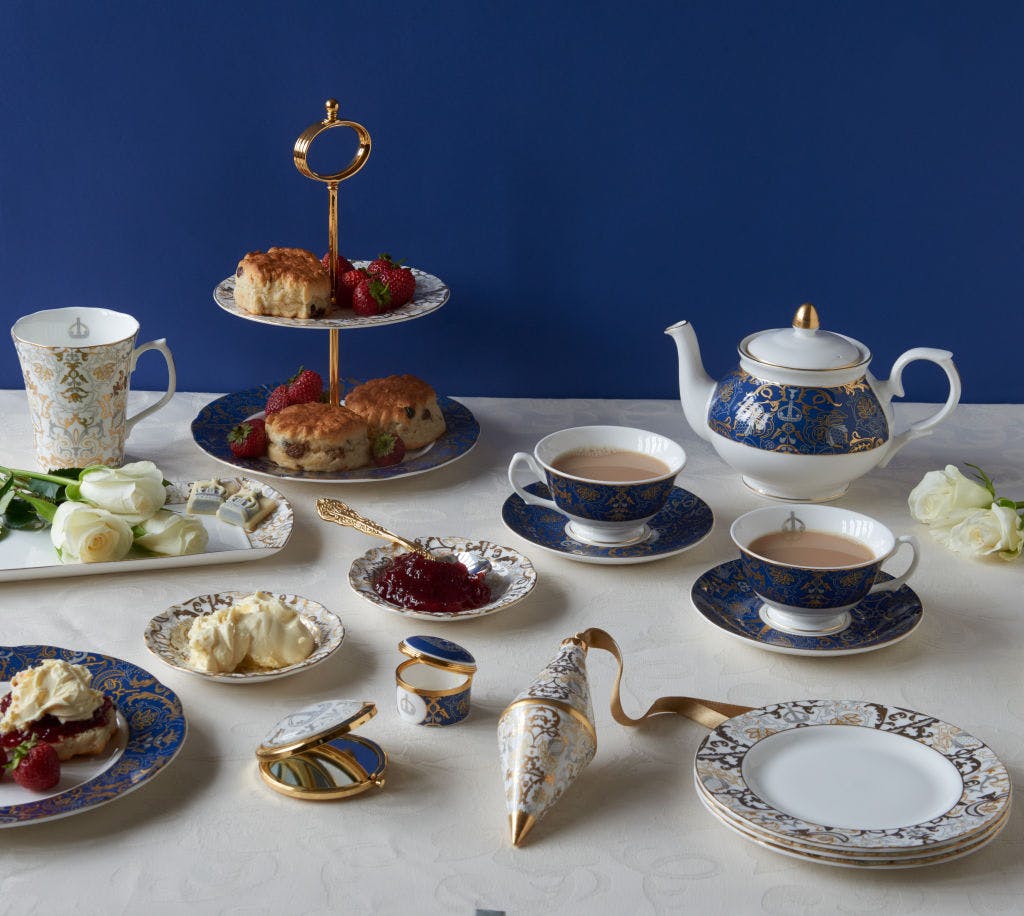
Royal Victoria gifts
Exclusively designed for Historic Royal Palaces, our Queen Victoria gifts are inspired by iconic symbols from Queen Victoria's reign.
From £five.99
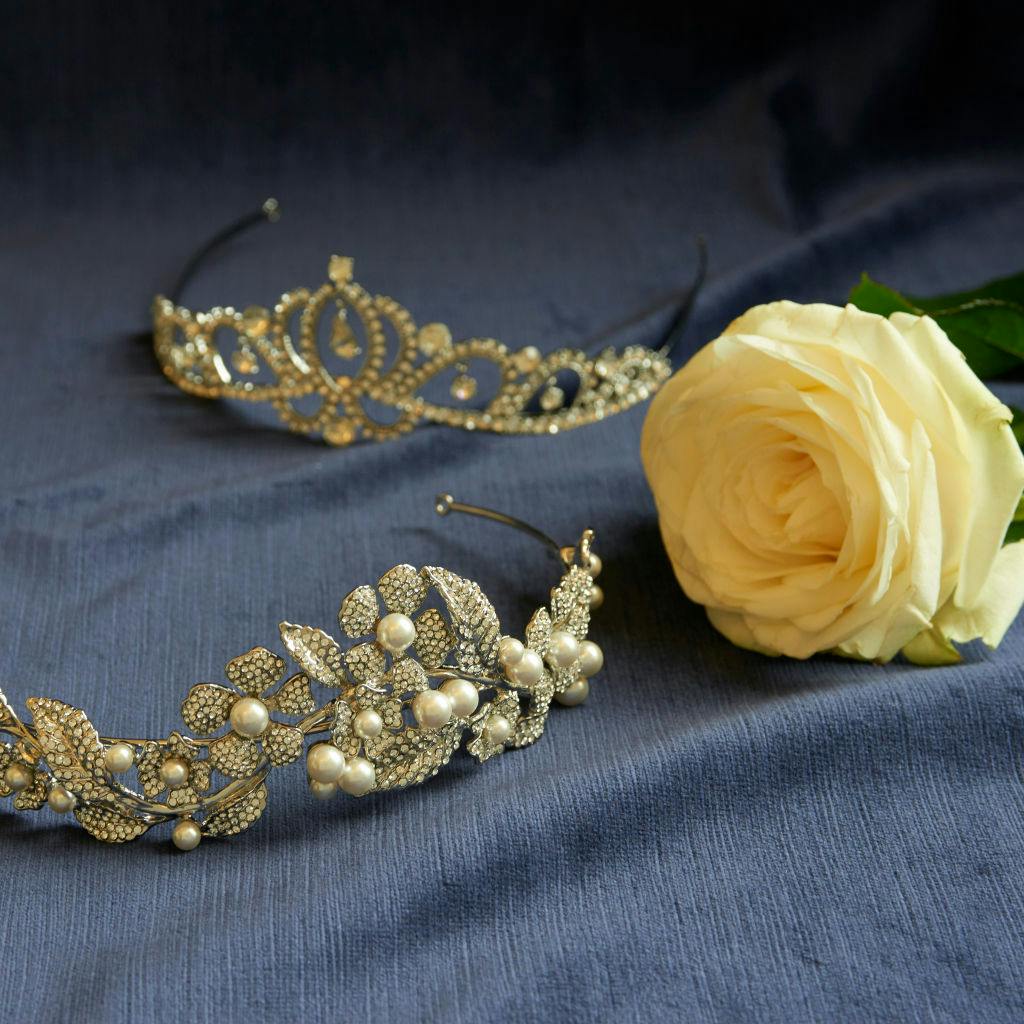
Shop jewellery
Choose from our stunning collection of jewellery, including pieces inspired by the palaces and the people who lived in them. These beautiful collections include necklaces, rings, earrings, charm bracelets, bangles and pendants.
From £14.99
Source: https://www.hrp.org.uk/kensington-palace/history-and-stories/the-story-of-kensington-palace/
0 Response to "1700s Royal Children Never Visited Home Families Again"
ارسال یک نظر